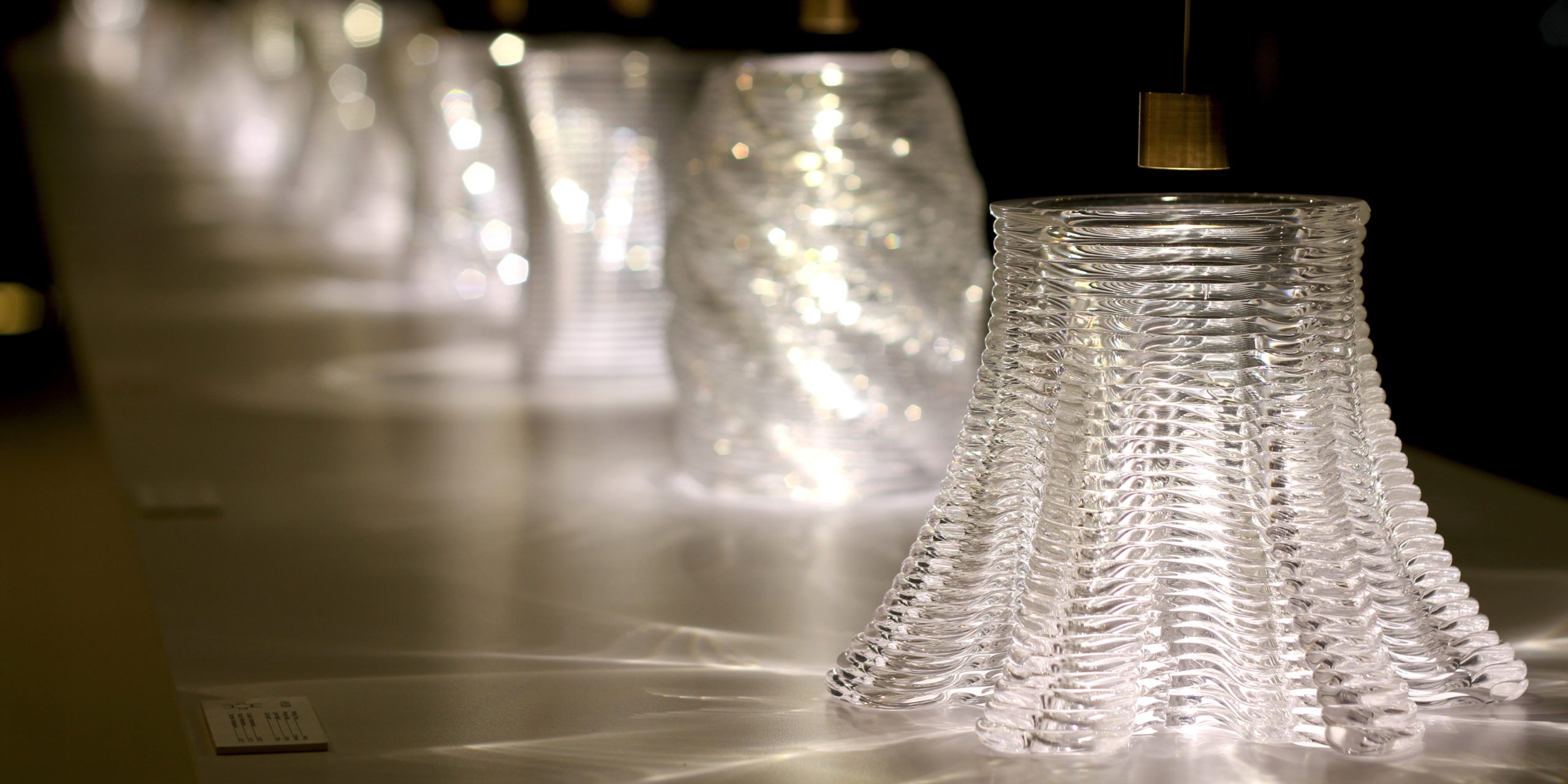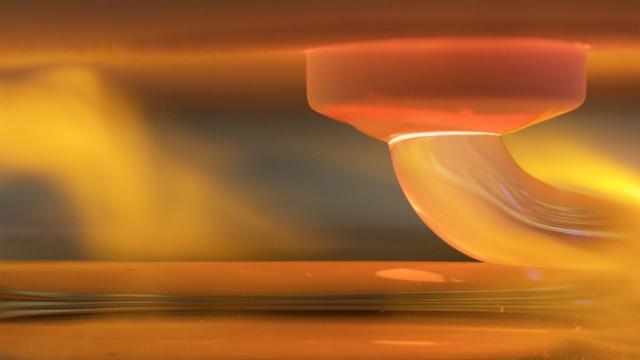3D printing has become a cheap and versatile way of creating new solid objects — but some materials have so far refused to be shaped using the manufacturing technology. Now, researchers at MIT have finally developed a way to 3D print optically transparent glass.
While it’s easy enough to 3D print using all kinds of plastic, glass has remained troublesome because of the extremely high temperatures that are required to melt the substance. Previous attempts have fused together small, individual glass particles below their melting point using a technique called sintering — but the resulting objects were neither transparent nor particularly strong.
Instead, a team made up of researchers from MIT’s Media Lab and Glass Lab has developed a system which uses high enough temperatures to ensure the printed glass is strong and, crucially, clear. It uses molten glass, loaded into a hopper from a glass blowing kiln, which is then extruded through a nozzle on to a computer controlled platform. The hopper and nozzle are held at temperatures of around 1,900 degrees Fahrenheit, to ensure the glass stays molten for as long as possible.
The device then leaves a coil of glass in its wake, working from a computerised design, which begins to cool and harden as the nozzle moves forwards. The researchers claims the process, pictured at the top of the page, looks like honey being drizzled on to a plate, until it hardens at least. In a press release, Neri Oxman, one of the researchers behind the new technique, explains what can be done using achieved using the technique:
“We can design and print components with variable thicknesses and complex inner features — unlike glassblowing, where the inner features reflect the outer shape… We can control solar transmittance. … Unlike a pressed or blown-glass part, which necessarily has a smooth internal surface, a printed part can have complex surface features on the inside as well as the outside, and such features could act as optical lenses…
“Could we surpass the modern architectural tradition of discrete formal and functional partitions, and generate an all-in-one building skin that is at once structural and transparent? Because glass is at once structural and transparent, it is relatively easy to consider the integration of structural and environmental building performance within a single integrated skin.”
The results, such as the object shown below, certainly look impressive. For now, though, the researchers aren’t happy: they’re working to try and ensure the flow of glass in the device is more consistent, to create more uniform objects, as well as developing the technique so that it can be used to crate a wide range of coloured glass objects, too. Even if the folks at MIT aren’t yet content, though, 3D printing just took another leap forward.

[3D Printing and Additive Manufacturing via MIT]
Images by Steven Keating and Chikara Inamura/MIT
